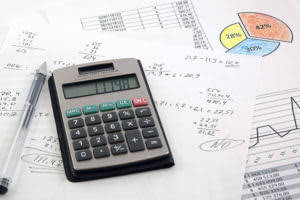
The manual handling of employee data and information leaves room for human error, which can lead to inaccuracies in the payroll system. These inaccuracies can result in payment delays, incorrect tax filings, and even employee disputes. Additionally, payroll fraud is also a significant risk for businesses that rely on manual processes, which could eventually lead to hefty penalties. Retailers have to stay vigilant and monitor tax-related changes regularly to ensure they are meeting all their tax obligations.
What Is Retail Accounting?
Since retail accounting depends on estimates, there is a great accounting scope for error in the valuation of inventories. For instance, if the retail prices have changed due to discounts or promotions, then the estimated inventory value may not be the actual value of the stock. In retail accounting, profits can be estimated easily by adding the same percentage markup to inventory.
Sales tax, taken care of
Given some of the limitations of the retail accounting method, you might be wondering why it is used. “The advantage is that it’s very easy to calculate and doesn’t require sophisticated tracking of how much someone paid for each SKU they purchased from a supplier,” says Abir. In other words, retail accounting is a way of tracking inventory costs that is especially simplified compared to the other available methods. In retail accounting, you estimate your inventory’s value rather than calculate it manually.

1.1 Traditional retail inventory method
Security features, functionality and access are subject to change without notice as deemed necessary by Right Networks. Availability can vary and are subject to occasional downtime and may change without notice. We auto-calculate sales tax when added to invoices so the rate’s accurate no matter the date, location, customer, and type of product or service. Oracle Retail’s marketing features allow companies to launch digital marketing campaigns, create customer loyalty programs, and provide customer data insights. These features fit well for wholesale stores because, due to their vast infrastructure, they need to reach as many customers as possible. Small independent stores looking for standalone financial software can buy Odoo Accounting, which includes invoicing, a double-entry system, and bank synchronization.
At that point, the expense for the purchase of the inventory is recorded as cost of sales (COS) or cost of goods sold(COGS) on your profit and loss statement. The retail method simplifies inventory management by eliminating the need for physical counting of the stock, which can be time-consuming and tedious. While the objective of stock-keeping can be achieved through this method, periodic physical evaluation can be supplemental to ensure accuracy and responsiveness. Cash flow, Balance sheets, and Income statements indicate how your business is accomplishing and are necessary for financing and taxes. To keep your taxes correct, track deductible costs, save receipts, and understand your tax obligations. Accounting software can make bookkeeping, and manageable, and outsourcing to an accountant can save time on complex tasks.
- It requires a meticulous approach to managing finances and adhering to both the United States and IRS guidelines.
- “Price and markup changes make retail accounting much less accurate, and many industries are dealing with those right now.
- Retail accounting refers to methods of tracking inventory from a stock and monetary perspective.
- This month, due to rising material costs, you bought 50 more sweaters of the same style at $45 each.
- Right Networks uses top-tier data centers and multiple layers of redundancy within its infrastructure to provide 24×7 availability.
With the calculation complete, you can retail accounting see that the final inventory costing method brings us to a total of $2,000 in ending inventory. Essentially, retail business owners need to determine the actual cost of purchased inventory. This inventory valuation technique averages the cost of all items without worrying about the order in which the inventory was purchased. The basis of accounting for retail involves recording financial transactions from sales of goods and services.

Tracking Inventory Amounts

Understanding these pitfalls will help in deducing whether this method meets your business requirements. Your balance sheet lists what you own (assets), what you owe (liabilities), and what’s left over (owner’s equity) at a given point in time. Imagine you own a small retail store selling yarn and kniwtting accessories.
How do you use retail accounting for your retail business?
Depending on the type of inventory you sell, you may be able to use the simpler retail method to calculate the cost of goods sold and the cost of your ending inventory. Take this number and subtract the sales total multiplied by the percentage, then subtract it from the cost of goods sold to https://www.bookstime.com/articles/what-is-partnership-accounting get the ending inventory total. According to HBR, Leaders use profit margin to see how much money remains after costs. To notice how a specific product aids with profit, you must see the contribution margin. This is the cash left after clearing the expenses of making a product from its selling price. To find it, you review the income statement and sort costs as either fixed or variable.
However, it’s only really suitable for solopreneurs or micro businesses, so unless you run a small, boutique store, you’ll want to upgrade. Xero is one of the biggest names in the accounting game, and its reputation is well-earned. Xero has a seriously robust feature set, with a great set of core accounting functions available on all of its plans. It has advanced billing features, making it particularly well-suited to larger businesses with high turnovers. Retail accounting is easy to use and maintain while still providing accurate records.
